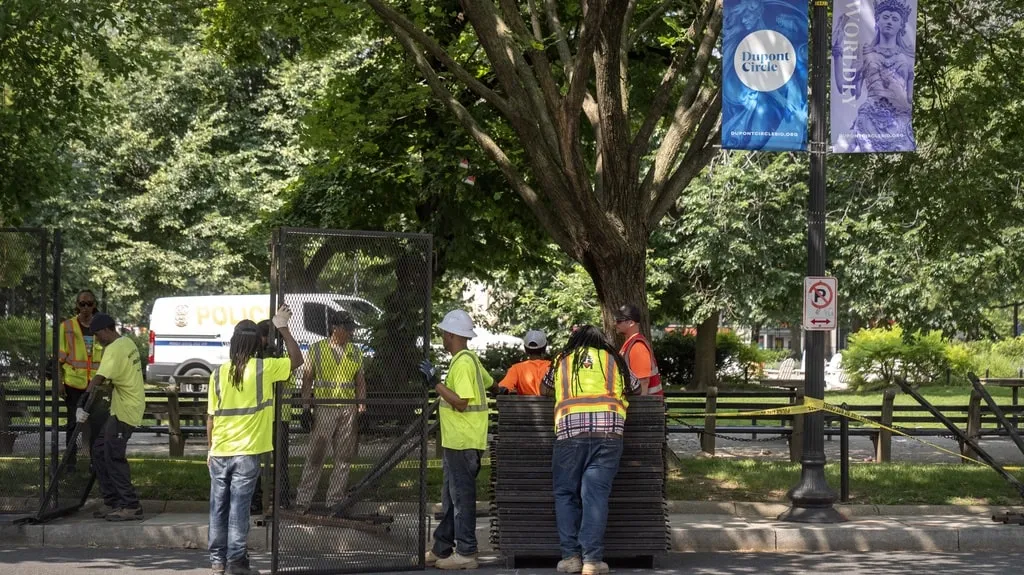August 31, 2012
Is Circumcision a Viable Option to Prevent HIV Infection?
Bran Luna LeFae READ TIME: 7 MIN.
Recent research has shown a direct link between male circumcision and reduced HIV transmission, generating growing interest in high-risk communities, especially in Africa, which has been hit hard by the HIV epidemic. Secretary of State Hillary Clinton even praised a campaign to circumcise adult male Africans as a preventative measure for HIV in her opening speech last month for the 2012 International AIDS Conference in Washington, D.C.
"On male circumcision, we've supported more than 400,000 procedures since last December alone. And I'm pleased to announce that PEPFAR will provide an additional $40 million to support South Africa's plans to provide voluntary medical circumcisions for almost half a million boys and men in the coming year," said Clinton during that speech. "This procedure reduces the risk of female-to-male transmission by more than 60 percent and for the rest of the man's life, so the impact can be phenomenal."
Public health activists in Africa are working hard to make circumcision a viable and accepted part of HIV prevention strategies. But what does this mean for HIV prevention tactics in the United States?
"Voluntary medical male circumcision is one of the most effective HIV prevention tools available today," said Global Advocacy for HIV Prevention (AVAC) Executive Director Mitchell Warren, in a recent press release.
Circumcision is a controversial topic. For many years, it was assumed that newborn male babies in the United States would be circumcised as a matter of routine practice. Over the last several decades, the anti-circumcision movement has grown across the United States. Men circumcised at birth complain of both physical and psychological issues stemming from the procedure. These issues can be significant and include scarring, painful erections, seeing themselves as mutilated, resentment and a sense of betrayal by their parents.
As part of the growing anti-circumcision movement, some healthcare workers have made efforts to educate people about the practice. In the mid-1980s, healthcare professionals in San Francisco founded the National Organization of Circumcision Information Resource Centers to provide information about the pros and cons of circumcision. This organization upholds the Declaration of the First International Symposium on Circumcision.
Part of this declaration, issued in 1989, states, "Parents and/or guardians do not have the right to consent to the surgical removal or modification of their children's normal genitalia."
Religious and Legal Considerations of Circumcision
Even religious groups have questioned the need for this practice. In 2011, Dr. Ronald Goldman, Executive Director of the Jewish Circumcision Resource Center, suggested that circumcision is a practice that should be questioned by Jewish parents.
"There are psychological effects of circumcision, too. Some Jewish men are very dissatisfied, angry or distressed about being circumcised," said Goldman in a June 2011 press release titled "A Message to Jewish Americans on Circumcision."
Public debate on the issue has also spilled over into the legal system, both nationally and globally. In 2011, residents of San Francisco gathered enough signatures to add a proposal to the ballot to outlaw circumcision for people younger than 18 years.
While the proposal was removed from the ballot by a judge who determined that the state, not the city, was responsible for medical oversight, there remains a growing portion of the population who view circumcision as genital mutilation. A key point of contention is circumcision of infants, who are unable to actively consent to the procedure.
In Europe, a recent ruling in a German court has stimulated the controversy by stating that non-medical circumcision, commonly performed in religious ceremonies, is an act of bodily harm. The court compared the practice to female genital mutilation, banned in many countries throughout Europe. On the other side of the fence are Jewish and Muslim families, whose religious practice requires all boys to be circumcised. To these families, this new ruling on male circumcision feels like an attack on their religion.
"We consider this to be an affront (to) our basic religious and human rights. Circumcision is an ancient ritual that is fundamental to our individual faiths and we protest in the strongest possible terms against this court ruling," stated leaders of European Jewish and Muslim groups in a joint statement issued in reaction to the court's decision.
Public Health Practitioners See Benefit to Male Circumcision
As this controversy rages, we now have a third viewpoint, that of public health practitioners who cite recent research studies that have demonstrated a significant medical benefit to male circumcision. Circumcision rates for newborns in the United States have been falling as more objective information became available to parents about the efficacy of the procedure. Until recently, the American Academy of Pediatricians (AAP) had adopted a fairly neutral stance on routine circumcision for newborn baby boys.
While it was known that circumcision had some medical benefits, the group stated that it also carried the possibility of reduced sensitivity and infection. With recent research pointing towards greater benefits, the AAP has changed the tone of their statement.
"In 1999, there was some data suggesting that there were some small medical benefits to circumcision but, at the time, there was not a compelling medical reason to recommend circumcision. So the previous policy didn't argue for or against circumcision. However, now there is much stronger evidence about protective medical benefits associated with circumcision, so the tone of this policy statement has changed," Dr. Douglas S. Diekema of the AAP Task Force on Circumcision told AAP News.
This shift in policy was based on the review of 1,000 studies indicating that circumcision can reduce the risk of urinary tract infections, some sexually transmitted infections, and penile cancer. While the ultimate choice for newborn circumcision is the responsibility of the parents, the AAP has now concluded that the benefits outweigh the risks.
Does the potential benefit of circumcision as an adult male outweigh the risks? The World Health Organization website explains that three randomized clinical trials have shown that circumcision can reduce HIV transmission between men and women by up to sixty percent. Removing the foreskin reduces the risk of HIV transmission because the inside of the foreskin is highly vulnerable to HIV infections. With the foreskin removed, the risk of infection is reduced. Of course, circumcision doesn't negate the need for other prevention measures. Men still need to follow safer sex practices, especially consistent use of condoms during penetration.
The protective effect of circumcision is so significant that data safety monitoring boards in charge of analyzing the results of research trials in Africa have stopped these trials early. The protection that circumcision offered from HIV infection was so compelling that the board decided it was more ethical to offer circumcision to all of the men in the trial immediately, instead of waiting until the end of the trial to offer it to the group that was still uncircumcised. New data suggests that if these men had not been circumcised, the rate of HIV infection in this region would have been up to 60 percent higher, since the study was initially conducted in 2005.
HIV prevention remains a significant topic for men who have sex with men (MSM) in the United States. As of 2009, the Centers for Disease Control and Prevention reported that 61 percent of new HIV infections in the US were found in the MSM population, with only 7.5 percent of new HIV infections occurring in men who have sex exclusively with women.
Because the clinical trials analyzing the effectiveness of circumcision on HIV transmission focused on heterosexual transmission, it is hard to say what kind of impact circumcision would have on the MSM community. Clinical trials are less common in the MSM population and few have been done to examine the protective effect of circumcision. Unfortunately, this is also the population that is seeing the highest rise in HIV infections in the US.
While circumcision may reduce the risk for certain sexual acts, is it worth having the procedure? With the increased attention around circumcision as an option for disease prevention, hopefully future clinical trials will address this question for the MSM population in the United States. For now, the question remains unanswered and the controversy continues.




